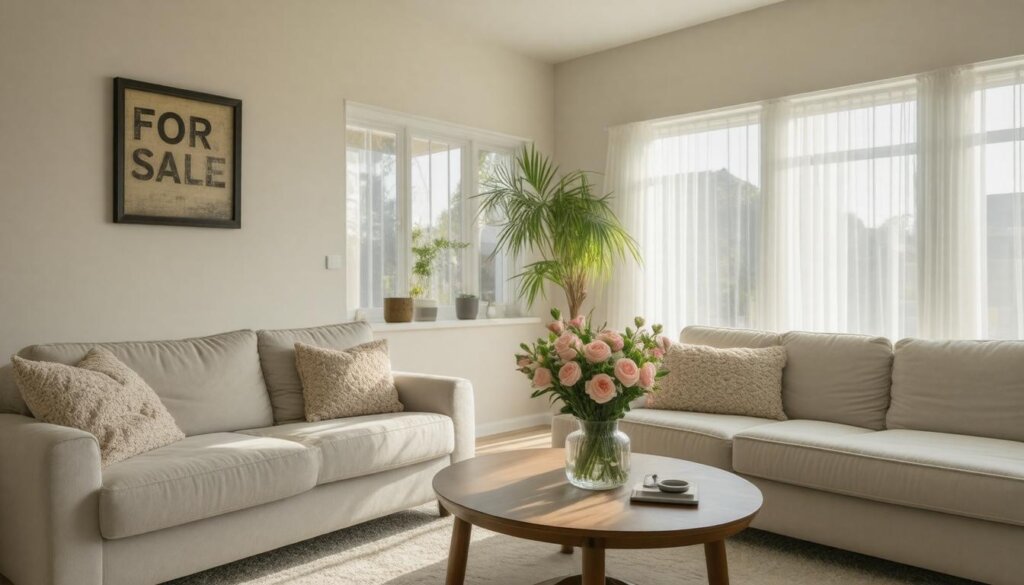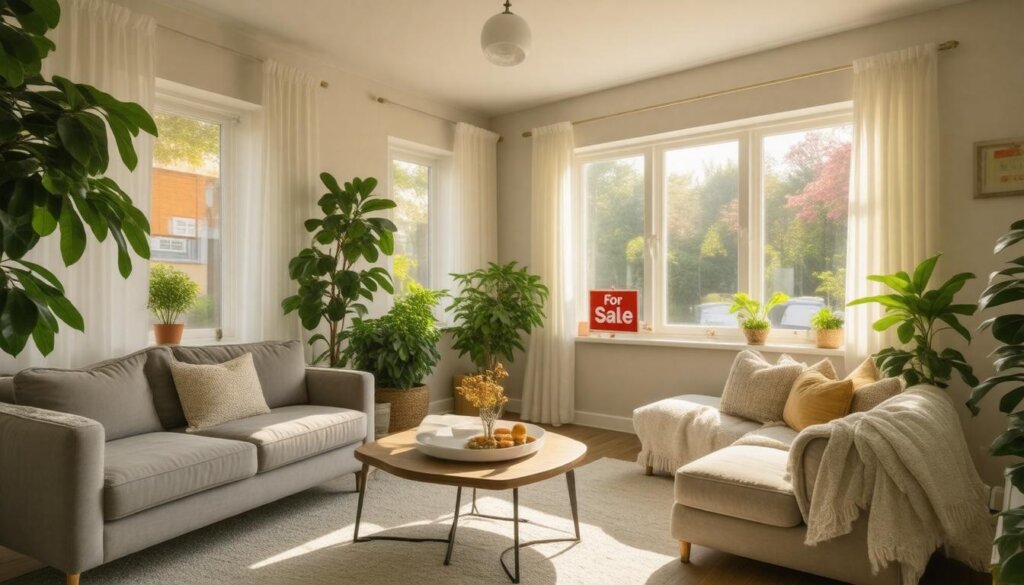Selling your house can feel like a daunting task, especially if you’re in a hurry to make a move. The good news is that there are effective strategies to help you get cash offers quickly, so you can transition into the next chapter of your life without stress. It’s not just about throwing a “For Sale” sign in your yard; it’s about understanding how to present your home and attract buyers who are ready to act fast. By focusing on practical steps—like increasing curb appeal, setting the right price, and utilizing smart marketing techniques—you can successfully navigate the selling process. In this article, we’ll explore simple yet powerful tips to help you sell your house quickly and efficiently, turning what often feels like an uphill battle into an exciting opportunity. So let’s dive in!
To sell your house fast, consider working with a home buying service like Myers House Buyers, which offers cash offers within 24 hours and allows you to sell your property as-is without the need for repairs or realtor fees. This streamlined process can enable you to close in as little as 7 days, making it ideal for homeowners facing time-sensitive situations.

Preparing Your Home for a Quick Sale
When you’re ready to sell your house quickly, one of the first steps is to give it a thorough clean. This means rolling up your sleeves and ensuring every inch of your home shines. Imagine potential buyers walking through sparkling floors, freshly cleaned countertops, and dust-free corners; it’s an inviting environment. Not only does it foster positive feelings, but it also implies to buyers that the house has been well-maintained.
By taking time to remove personal items, like family photos or heavily personalized decor, you allow buyers to envision their lives there. They can easily imagine moving in and making the space their own. If there’s too much furniture or clutter getting in the way, consider renting a storage unit as a temporary solution.
A clean slate is important, but as any homeowner knows, sometimes things just need a little TLC.
Minor Repairs and Touch-Ups
Once your home is spotless, it’s time to focus on minor repairs. These small fixes can go a long way in preventing potential buyers from being deterred by items that scream “future renovation.” Start with leaky faucets – not only are they annoying, but they can also signify larger plumbing issues down the line. Patch up any wall holes or faded spots in paint with simple spackle and touch-ups. Replacing broken tiles makes a noticeable impact; it shows care for detail and upkeep of your home’s condition.
Working light fixtures are equally important; ensure bulbs are replaced so every room feels welcoming and bright. Following those minor repairs, think about the magic of paint. Applying a fresh coat of neutral-colored paint can create an illusion of space while giving rooms a fresh look that appeals to a variety of tastes. According to experts, lighter colors tend to make spaces feel larger and more inviting.
With the interior nice and tidy, let’s not forget how essential the exterior is for those first impressions.
Boosting Curb Appeal
The exterior of your home sets the stage for what lies within; thus, it should not be overlooked. Enhancing curb appeal means considering landscaping—trimming overgrown bushes and planting colorful flowers adds life and warmth to your home’s façade. A welcoming front entrance can really invite potential buyers in! Painting the front door a bright, inviting color or even simply power washing dirty surfaces can do wonders.
In fact, statistics from the National Association of Realtors reveal that 94% of real estate agents suggest boosting curb appeal because it significantly enhances property value. Whether it’s fresh mulch in flower beds or a neatly mowed lawn—it’s all about creating an inviting ambiance right from the start.
In this process of transformation, attention to both aesthetics and functionality prepares your home for its next chapter. Next, let’s explore ways to maximize your asking price through strategic pricing methods.
Pricing Strategies for Fast Sales
Proper pricing not only ensures that your home captures attention quickly but also helps facilitate a smooth sale. Understanding how to price your property is like setting the stage for an engaging performance; everything needs to resonate with potential buyers right from the start.
Understanding Market Value
One of the most effective ways to determine your home’s asking price is by conducting a comparative market analysis (CMA). This involves looking at similar properties in your area—think about size, age, and location—that have recently sold. Evaluating these sold homes will give you insight into what buyers are willing to pay in Augusta.
By setting your price slightly below market value, you can attract immediate interest and potentially spark a bidding war. This tactic puts your home in the spotlight and may also push the final sale price above what you initially priced it at.
But don’t stop there; being flexible with your pricing can make a significant difference.
Flexible Pricing Options
Implementing flexible pricing strategies can be beneficial if you notice that interest isn’t translating into offers. One approach involves scheduling preplanned price reductions. If the house hasn’t sold within a few weeks, consider reducing the price systematically. Research indicates that homes which undergo a price cut often sell faster than those that do not. Therefore, mapping out your price decrease strategy beforehand keeps your property attractive and competitive while minimizing time on the market.
In addition to adjusting prices, think about offering enticing incentives.
Incentives and Discounts
Including extras in the sale can sweeten the deal for potential buyers and set your listing apart from others. For instance, offering to cover closing costs or including appliances such as washers and dryers can prove irresistible to some buyers.
To share an experience, one seller mentioned that including their washer and dryer closed the deal within just a week after struggling with slow interest for months. These small inclusions can be powerful motivators in making buyers take action sooner rather than later.
As you refine these strategies, focus on creating an appealing package that speaks directly to potential buyers’ needs and wants. Transitioning next, consider how presenting your home effectively can further elevate its appeal in today’s competitive market.
Effective Marketing Techniques

A broad and strategic marketing plan is crucial for attracting potential buyers swiftly. The key lies in reaching them through the right channels and engaging them with compelling content. Think of your home as a product that needs to stand out on a crowded store shelf. It’s not merely about having it visible; it’s about presenting it in a way that makes buyers stop and take notice.
Utilizing Online Listings
One of the most impactful methods is to list your property on popular real estate websites such as Zillow, Realtor.com, and Redfin. Each platform has its strengths, and by diversifying your listings, you enhance visibility to potential buyers.
High-quality photos are a must; consider hiring a professional photographer. Just like a book cover attracts readers, stunning visuals can draw buyers into wanting to learn more about your home. According to the National Association of Realtors (NAR), a staggering 93% of home buyers start their search online. Therefore, a catchy listing title coupled with a detailed description highlighting key features and amenities can make all the difference in generating interest.
While online listings can garner significant attention, don’t underestimate the power of direct marketing techniques.
Leveraging Social Media
Utilizing platforms like Facebook, Instagram, and Twitter can help spread the word about your property. Share captivating stories about your home—from the cozy living room where family gatherings occurred to that sun-soaked porch perfect for summer evenings. Engaging visuals paired with emotional storytelling work wonders.
Go beyond just posting; get involved in local community groups or pages that frequently discuss real estate. This interaction fosters relationships with potential buyers who might be looking for homes very soon. Paid advertising on these platforms offers tools to target demographic specifics—age ranges, interests, and even geographic locations—to ensure that your ads reach those actively seeking homes in Augusta.
Although digital mediums thrive today, traditional methods still hold substantial value in marketing.
Traditional Advertising
Think of yard signs, open houses, and flyers as the original social networks—you are connecting directly with your immediate community. A “For Sale” sign on the front lawn piques curiosity among passersby and prompts conversations around the neighborhood. Open houses allow interested parties to experience your home firsthand, providing them an opportunity to envision their life there—this type of emotional connection can tip the scales toward a quick sale.
Flyers placed strategically at local businesses or community boards serve as tangible reminders that your home is available. Consider these methods as foundational touches that complement modern marketing strategies effectively.
By harnessing both innovative digital strategies and enduring traditional techniques, you position yourself to create meaningful connections with potential buyers and generate interest effectively. Building on those connections will be essential as we explore how to make your property truly shine during showings.
Maximizing Appeal for Showings
The goal during a showing is not just to allow potential buyers to walk through your home but to create an emotional connection that leads them to envision their life there. It begins with staging your home effectively. While involving professionals can be a game-changer—after all, staged homes sell 73% faster than non-staged ones according to the International Association of Home Staging Professionals (IAHSP)—you don’t need to break the bank to make a meaningful impact.
Staging the Home
Whether you choose to hire a professional or take on the task yourself, effective staging reveals your home’s best features while minimizing any flaws. This involves decluttering spaces, rearranging furniture for optimal flow, and using tasteful decor to enhance the ambiance. Think of staging as telling a story—a narrative that allows buyers to imagine their future happy moments within those walls.
Homes that feel inviting and organized facilitate emotional engagement; this is where buyers see their own lives unfold.
But professional help isn’t strictly necessary if you’re willing to get a little creative.
DIY Tips for Staging
There are many DIY tips that can help elevate the atmosphere of your home significantly. For instance, mirrors can be strategically placed to create the illusion of larger spaces, making rooms feel more expansive and airy. Soft lighting plays a big role too; consider lighting-scented candles or using warm bulbs rather than stark fluorescent lights, ensuring they do not overwhelm guests with strong scents. On particularly sunny days, open those curtains wide to allow natural light to flood in and brighten every corner while maintaining a comfortable room temperature.
The overall vibe should communicate warmth and welcome—a sanctuary from the hustle outside which invites potential buyers in and encourages lingering.
It’s incredible how small fixes can also make a huge difference.
Quick Makeovers
Sometimes it’s the simplest tweaks that have the largest impact. Adding fresh towels in the bathroom can offer an impression of cleanliness and care, while placing a bowl of fresh lemons on the kitchen counter adds both color and vibrancy. Consider incorporating potted plants as they not only bring life into the space but also enhance air quality.
One homeowner shared a great success: “Just adding a few potted plants completely changed the vibe during showings and accelerated our sale.” This illustrates how welcoming touches can shift perceptions—leading prospective buyers closer to making an offer.
By combining thoughtful staging with strategic detailing, you can transform your home into an irresistible offering that captures the hearts—and wallets—of interested buyers. As we continue, let’s explore how to handle incoming offers efficiently, maximizing every opportunity presented.
Handling Offers Efficiently
Once those offers start rolling in, it’s crucial to address each one with swift attention. This is where preemptive planning pays off. By being organized and ready to evaluate offers as they come, you can make informed decisions quickly. Delays in responses can frustrate potential buyers, resulting in them retracting their offers. Think about it: if you’re excited about selling your home and you receive an offer, the last thing you want is to leave that buyer hanging without a response. A rapid reply fosters goodwill and keeps the negotiation process alive.
Evaluating offers involves more than just looking at the numbers; it’s essential to assess the overall quality of each offer. When you receive an offer, take a moment to analyze it deeply—decide whether to accept, reject, or counter based on not only the price but also what’s attached to that offer. For instance, stronger terms might make a slightly lower offer more appealing than a higher one with numerous contingencies. Buyers may be willing to pay for convenience rather than just focusing on the figure.
However, manageable terms don’t stop at the offer price.
Consider All Terms
Every offer will have unique stipulations attached, influencing how smoothly a sale could go. Are there contingencies involved? Common ones include financing and inspection conditions that give buyers the chance to back out under certain circumstances without penalty. These elements need consideration because they impact how firm and solid an offer truly is.
Closing dates are also significant; some buyers might be eager to close much faster than others, which may help you avoid additional holding costs down the road.
For example, an all-cash offer may seem lower, yet its appeal lies in its quick turnaround and reduced risk of financing issues falling through—less waiting means fewer anxieties associated with the sale. When evaluating offers, remember that every element counts. Your goal isn’t just to get top dollar; it’s about striking that perfect balance between cash now and peace of mind throughout the process.
Once you’ve weighed these factors, it’s time to think strategically about how you want to approach negotiations.
Negotiating Wisely
Don’t shy away from engaging in negotiation discussions. Counteroffers are not only commonplace but often necessary to reach mutually beneficial terms. Approach this phase professionally and calmly—the way you respond sets the tone for continued interactions with potential buyers.
If you’re uncertain about best practices or feel overwhelmed by the complexities of negotiations, seeking advice from a qualified real estate agent can provide clarity and support where needed.
Remember, negotiating isn’t just about getting your price but ensuring both parties feel like winners. Effective negotiation leads to better terms while fostering positive relationships—which can benefit everyone involved as you move forward toward completing the sale of your home.
Transitioning from these critical steps in handling offers, it becomes essential to explore how to finalize these agreements efficiently and effectively.
Closing the Deal Quickly

Finalizing the sale comes down to thorough organization and attention to detail. Every minute counts, especially for those eager to move on with their lives.
One crucial step in the process is scheduling a home inspection ahead of time. By doing so, you’re addressing potential issues early and speeding up what will inevitably happen—many buyers will want an inspection regardless. Having this organized can shave days off your timeline and helps maintain buyer confidence.
Once you’ve got inspections squared away, it’s time to tackle the often tedious world of paperwork.
Efficient Paperwork Handling
Navigating paperwork can seem overwhelming, yet it’s one of the most critical components in closing quickly. To effectively manage these documents, a solid understanding of your timeline is essential.
On average, various tasks take different amounts of time:
| Task | Estimated Time |
|---|---|
| Title Search | 3-5 Days |
| Appraisal | 7-10 Days |
| Loan Approval | 14-30 Days |
| Closing Documents | 1-2 Hours |
| Final Walkthrough | 1 Day |
Keeping all parties updated—including buyers, sellers, and agents—is crucial for maintaining momentum throughout these steps. When everyone is informed about timelines and upcoming tasks, it alleviates confusion and ensures seamless coordination.
With efficient handling in place, communication becomes paramount.
Using Technology
Streamlining communication can significantly expedite these processes. Leverage technology like electronic signing platforms such as DocuSign. These allow for remote signatures, avoiding delays caused by in-person meetings that often disrupt schedules.
Such tools can save precious time, ensuring that paperwork moves swiftly toward completion.
Overall, consistent organization and modern tools contribute to an efficient home-selling experience. If you’re looking for an even faster solution, consider reaching out to Myers House Buyers. Specializing in quick cash offers, we help homeowners close without the stress of traditional selling methods, making your transition smoother than ever before.
By contacting us at (706) 607-5251 today, you can take the first step towards selling your house fast and effortlessly.

